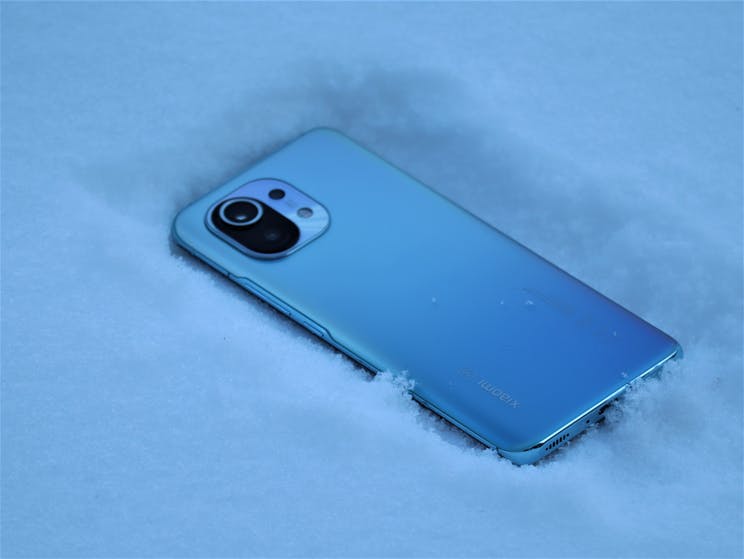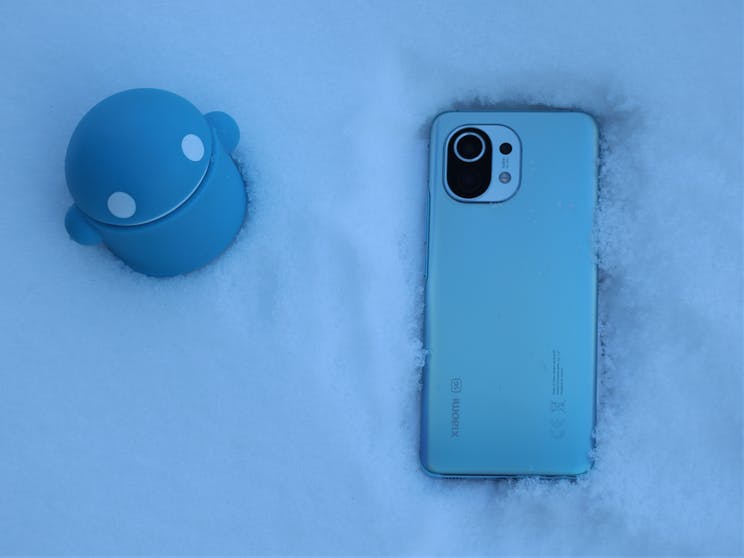Xiaomi Mi 11 hands-on: so much potential, but just as many questions
Xiaomi has unleashed its Mi 11 flagship on the world. The Mi 11 is a new premium device that promises a top-class screen, lightning-fast performance and a strong camera experience. Here you can read our first very first findings.
Contents
Xiaomi Mi 11
Like Samsung’s S21 series, the new Xiaomi Mi 11 (849 euros) does not come alone. We expect a cheaper Lite version, a powerful Pro version, and recently a remarkable Ultra version also surfaced that has a second screen next to the camera setup. Nevertheless, the Mi 11 is the first of these devices to be announced, and we were able to get started with this flagship for a while.
Specifications
| Dimensions: | 164.3 x 74.6 x 8.1 mm |
| Screen: | 6.81 inch FHD +, 3200x 1440p, AMOLED, 120 Hz |
| Processor: | Qualcomm Snapdragon 888 |
| Random access memory: | 8 GB |
| Storage: | 256 GB, not expandable |
| Camera: | 128 MP main camera, 13 MP wide angle camera, 5MP telecom macro camera |
| Selfie camera: | 20 MP |
| Battery: | 4600 mAh, 55 Watt fast charging, 50 Watt wireless charging |
| Software version: | Android 11 |
| Additional: | In-screen fingerprint scanner, dual sim, 5G, Corning Gorilla Glass Victus |
120 Hz QHD screen
When you first take hold of the Mi 11, it is immediately the screen that attracts attention. Namely, it has a large 6.8-inch panel, compared to the 6.67-inch panel of the Mi 10 series last year, and there are clearly rounded corners, and that design choice will undoubtedly have its supporters and opponents.
While the big screen really does grab the attention, I wasn’t completely convinced of the quality of videos and animations at first. With a look at the settings, I immediately saw that Xiaomi uses the 60 Hz refresh rate by default instead of the full 120 Hz. I immediately adjusted that in the settings, because of course you choose this phone because of its handsome screen. It can be seen later what the impact of the combination between the QHD resolution and 120 Hz on the battery life is.
Once you’ve increased the refresh rate, the Mi 11’s screen is a pleasure to use. Obviously I have yet to test it in more lighting conditions, but the colors look accurate and this is also one of the brightest screens I have been able to test.
Design and housing
Xiaomi has certainly managed to create a phone that is instantly recognizable. If you look at it from the front with the curved edges and camera notch, you immediately think of the Xiaomi Mi 10. What is striking is that the phone no longer has a border at the top and bottom and the screen curves gently into it. the metal frame of the phone.

You also see such refinements in the design of the hardware in other areas, but the most important design change is the arrangement of the camera on the back. Xiaomi shows a rectangular camera island with rounded corners and both a black color and the color that you also find on the housing. Design is very personal, but I am not a big supporter of the design. The camera on the back consists of different layers for the lenses and that seems to attract a lot of dust in the many edges of the camera island at first.
The Mi 11 also has a very smooth housing, but fingerprints are barely visible. The manufacturer also supplies a transparent case with the phone, and that is certainly an added value. Furthermore, the phone is IP68 waterproof and protected by the new Corning Gorilla Glass Victus on the front and Gorilla Glass 5 on the back. All good features for a phone in this price range.
Snapdragon 888 and battery
According to Xiaomi, the Mi 11 is an absolute powerhouse and this includes the potentially most powerful chipset of the moment: the Snapdragon 888. Now that we have the Mi 11 in the editorial office, we can finally see how the Snapdragon fares against the Exynos 2100 of the Samsung Galaxy S21. It is striking that Xiaomi only releases the variant with 8 GB RAM and 256 GB storage in the Netherlands. The version with 12 GB of RAM is therefore not available here.

We still have questions about the battery. Although the Mi 11 gets a larger screen with a higher resolution, Xiaomi delivers its flagship with a smaller 4600 mAh battery. In the coming days we will find out how big that impact is on battery life, although it may not bodes well that Xiaomi is trying to use 60 Hz on the screen as standard.
Users, on the other hand, will be able to enjoy better fast charging performance. The Mi 11 comes with a 55-watt charger that is remarkably compact in size. In addition, it is also fast with wireless charging, because it supports a power of 50 watts.
108 MP camera
The first photos that I took with the Xiaomi Mi 11 leave a good first impression. I got started with the 108 MP main camera, the 13 MP wide-angle camera and the 5 MP telemacro camera. I will have to test the main camera extensively in different lighting conditions to really be able to make a judgment. Last year, the Mi 10 night photography was really the Achilles heel of the camera and I wonder if Xiaomi has taken steps forward in the field of image processing in the meantime.

I have experienced the telemacro camera before with the Poco F2 Pro, and it is a way to zoom in even further on subjects that you want to photograph very close. Such a sensor is not as useful as a strong telecamera with 3x optical zoom, but you can certainly take nice photos with it. This often concerns rather artistic images. The first pictures I was able to take already seem to indicate that the performance is better this time compared to the Poco. In the review of the Mi 11 we share a series of photos.
In terms of video, Xiaomi is coming out with a series of new film effects. Magic Zoom, for example, creates the illusion that an image zooms in and out at the same time and I also started working with the Parallel World. As the name suggests, that function creates a mirror effect in real time. All new video functions are possible thanks to artificial intelligence, but none of the new video functions excite me right away. Hopefully that picture will change when I have been able to test the Mi 11 more extensively.
MIUI 12
The Xiaomi MI 11 comes with Android 11 and Xiaomi’s MIUI 12 software shell. MIUI is known as a fairly ‘heavy’ shell when it comes to extra functionalities and deviations from the interface. The company has announced that it is now working on a series of optimizations that will ensure that the Xiaomi software is better at handling processor power while being more energy efficient. The improvements are expected in the MIUI 12.5 update rolling out in the second quarter of 2021.

The update does not contain any major new functionalities, but Xiaomi also comes with the option to remove system apps. On Android phones – and in particular those of Xiaomi – you will find many pre-installed apps that brands themselves add to the device. Often the functionalities also overlap with other pre-installed apps from Google. It is a good thing that Xiaomi users are now given the choice whether they want to use those apps. The fact that MIUI 12.5 does not bring any major novelties does not have to be bad news, because it seems that with these improvements Xiaomi is focusing on what is really important for MIUI.
Preliminary conclusion
The Mi 11 is a phone that holds a lot of trumps. First of all, the phone has a unique design, which is very good to see. In addition, Xiaomi comes with an absolutely top screen that is certainly a candidate for the best smartphone screen, and the phone does not cut back on the processor.
Furthermore, we are especially looking forward to extensively testing the Mi 11’s camera. Is that flagship worthy and what has Xiaomi done to get rid of the previous downsides of its 108 MP camera? Are the new features and the tele macro camera the addition we were hoping for? What certainly speaks in favor of the Mi 11 is the MIUI 12.5 update that is on the way and should make the global version of the software a lot more mature. Although it will remain patient for a while until the update arrives.

A big question mark remains the battery life of the device for the time being. How does the 4600 mAh battery compare to the large QHD screen with 120 Hz refresh rate? In any case, the phone comes with an improved 55-watt fast charger and strong wireless charging. We look forward to seeing all the puzzle pieces of the Mi 11 slowly coming together in the coming days.
Buy Xiaomi Mi 11
The Xiaomi Mi 11 is available in the colors Midnight Gray and Horizon Blue and with a suggested retail price of 849 euros. You can buy it via Mi.com, Vodafone, KPN, Belsimpel, Coolblue, Bol.com and Mobiel.nl.
Pre-orders will start on the Mi 11 on February 26. During the pre-order period up to and including 15 March, you will receive the Mi Watch as a gift when you purchase a Mi 11 via: Mi.com, Belsimpel, Coolblue, Bol.com and Mobiel.nl.
Xiaomi supplies the Mi 11 with a free two-year warranty. In addition, customers are eligible for a one-time free repair service at their local Xiaomi Service Center during the first twelve months after purchase. What do you think of the Xiaomi Mi 11? Let us know in the comments at the bottom of this article



